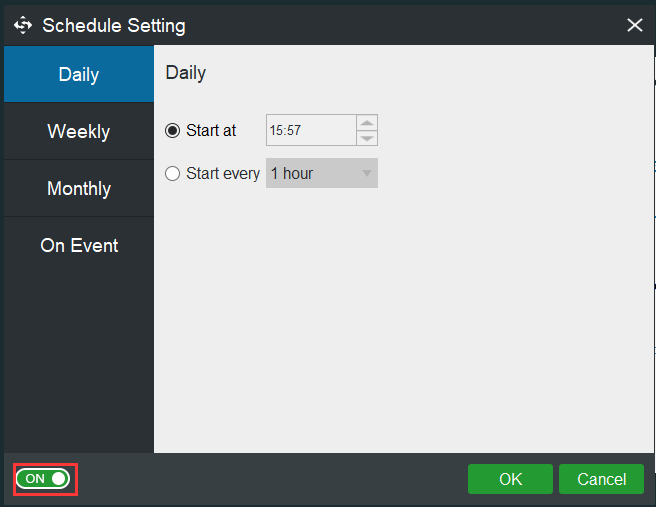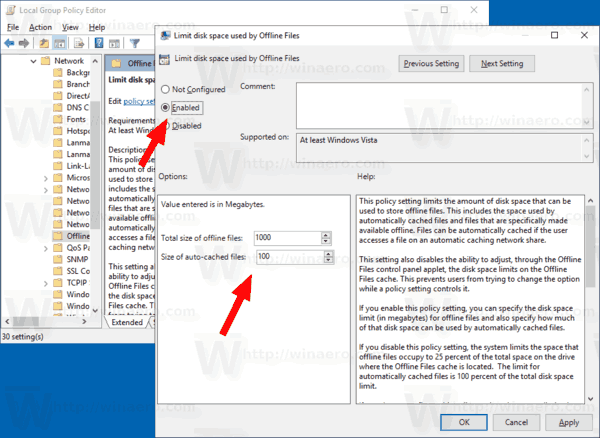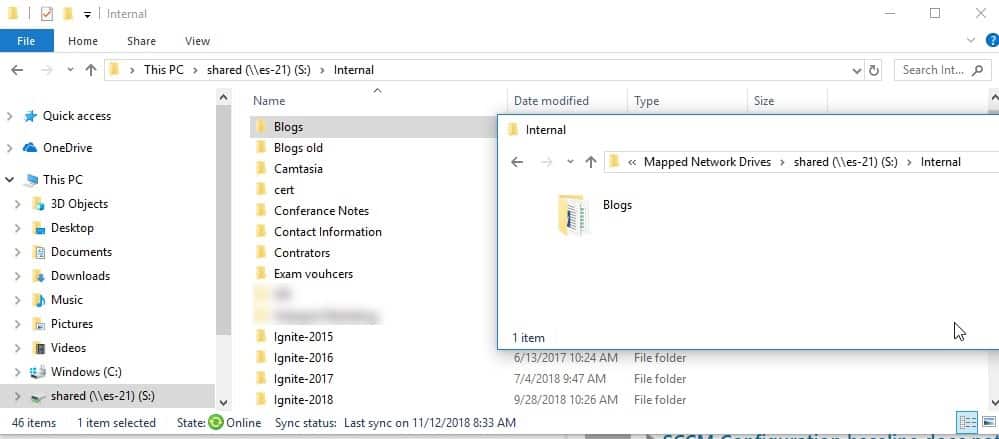

- Offline file sync windows 10 update#
- Offline file sync windows 10 license#
- Offline file sync windows 10 Offline#
The progress bar shows the progress of the sync.
Offline file sync windows 10 Offline#
To immediately sync your offline files with those on the network, click the Offline Files folder, then click Sync on the toolbar. (Mobsync is the name of the program that runs Sync Center.) (See Figure 1.) If you are using Windows 10, type "mobsync" (without the quotes) in the Search bar and press Enter. To use Sync Center in Windows 7, click the Start button, type "Sync Center" (without the quotes), and press Enter. It gives you some level of control over the synchronization between a network file and its corresponding offline file. The deletion will take a few minutes to complete.Sync Center is used in conjunction with offline files. You can also use the Azure CLI: az group delete -g quickstart Follow the instructions to confirm the deletion.Select the resource group holding the quick start resources.Unless you're doing another quick start tutorial, you can delete the resources associated with the backend service now. Repeat the SQL statement in the Azure portal and verify that your changes have been pushed to the remote service. You'll see the HTTP transactions happening in the Output Debug window. Select the Refresh icon on your app to push the data in queue to the backend service. Repeat the SQL statement in the Azure portal and verify that no changes have been made to the data in the database. Then select Run.Ī list of the current TodoItems will be displayed. In the query editor, enter SELECT * FROM.

Offline file sync windows 10 update#
Select the link to update the allowlist, then press OK to retry the login.

If necessary, you'll be prompted to allow access for your IP address.Log in with SQL server authentication using the same credentials you set up for the database. Open the resource group that contains the resources for the quickstart. The app doesn't synchronize with the backend until the refresh icon is pressed. The Environment.SpecialFolder class gives standard locations according to the application. You can store the offline database wherever you have read/write/create permissions on a Windows system. If you haven't completed the authentication tutorial, the definition should look like this instead: _service = new RemoteTodoService() OfflineDb = Environment.GetFolderPath() + "/offline.db" Change the definition of the RemoteTodoService as follows: _service = new RemoteTodoService(async () => await GetAuthenticationToken()) In the TodoApp.Uno project, edit the file.

Then, pull all the items in the table. First, push all the items in the table. / A task that completes when the refresh is done. / Refreshes the TodoItems list manually. Update the RefreshItemsAsync() to do offline synchronization: /// Set _initialized to true to prevent duplication of locking. : new DatasyncClient(Constants.ServiceUri, new GenericAuthenticationProvider(TokenRequestor), options) Īwait _client.InitializeOfflineStoreAsync() ? new DatasyncClient(Constants.ServiceUri, options) Update the InitializeAsync method to define the offline database: // Create the offline store definition / Reference to the table used for datasync operations.Īdd a new property for storing the offline database location: /// Update the class as follows:Īdd the following using statement to the top of the file: using Ĭhange the definition of _table to be an IOfflineTable: /// Open the TodoApp.Data project and locate the RemoteTodoService.cs class (within the Services directory).
Offline file sync windows 10 license#
In the right-hand pane, select all the client projects (except the TodoAppService.NET6 project).Īccept the license agreement when prompted. In the new tab, select Browse, then enter in the search box. Right-click on the TodoApp solution, then select Manage NuGet Packages for Solution. The IOfflineTable uses an on-device SQLite database which you synchronize with a remote service. When using offline sync, you read to and write from a IOfflineTable instead. In online operation, you read to and write from a IRemoteTable. You can add offline capabilities to your app without authentication. We also assume you have added authentication to your application. Once the device is back online, these changes are synced with the remote backend.īefore starting this tutorial, you should have completed the Uno Platform Quickstart Tutorial, which includes creating a suitable backend service. Offline sync allows end users to interact with a mobile app-viewing, adding, or modifying data-even when there's no network connection. This tutorial covers the offline sync feature of Azure Mobile Apps for the Uno Platform quickstart app.


 0 kommentar(er)
0 kommentar(er)
